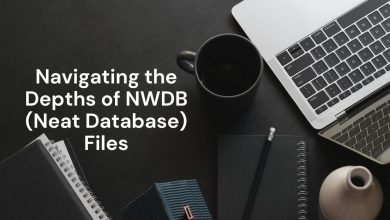
Remote working has undoubtedly assisted us in navigating the pandemic by adhering to the necessary protocol of social distancing, but with greater independence comes a greater need for security. The lack of foolproof Cybersecurity measures at the employee’s remote workplace poses a serious threat to information security and shared data across unsecured networks.
Cybersecurity Tips for Remote Workers
Some remote workers may be required to use personal devices and networks for office work, and these devices may be lacking in appropriate security tools that are part of any office network or system.
This multiplies the security risks associated with remote working. Furthermore, any data leakage can result in significant costs for organizations. As a result, it is critical for employers to have a solid cybersecurity plan in place for their remote workers.
Here are some simple hacks to protect yourself, your remote working employees, and the company from data theft or email hacking.
Enhance Your Cybersecurity by Using VPN
When using a public Wi-Fi network, you must use a VPN. These are unsecured networks with no firewalling between users, making you more vulnerable to hacking attempts. A VPN, or Virtual Private Network, is a private connection that connects to the internet via a “third-party” server rather than directly to the targeted network.
VPN uses encrypted tunneling protocols supported by operating systems and devices to provide secure, encrypted connections between remote work locations and headquarters.
As a result, it conceals your online identity and internet activities, protecting you from malicious hacking attempts.
As a result, a VPN is the ideal solution for organizations looking for a cost-effective way to protect their data while on the go or when their employees are away from corporate networks by masking remote employees’ access from hackers.
Another important aspect of remote work security best practices is to protect your home Wi-Fi network by enabling WPA2 encryption and selecting a strong password.
Read 10 Blogging Strategies for Reaching the Right Audience (and Keep Them).
Pay Attention to Use Of Strong Passwords
Make an effort to create stronger passwords and better passwords in general. Choose a long password with an arbitrary mix of upper and lowercase letters, special characters, and numbers, for example.
Anything less is vulnerable to brute force attacks and can be easily compromised using a dictionary attack. More is always preferable! Also, avoid using the same password for multiple accounts (e.g., your bank username and your online retailer username).
Using a password management tool such as LastPass or KeePass is another way to ensure password security. These technologies will generate and save your passwords, requiring you to remember only one master password for authentication. The best part about these tools is that they are cross-platform, allowing you to use the same tool on Windows, Mac OS X, Android, iOS, and even Linux.
Two-factor authentication, which involves a two-step verification of a username or password, can be used to add an extra layer of security to your accounts. The second step necessitates verification with a code sent to you via email or phone message.
Select SSL Encryption
An SSL certificate, also known as a Secure Socket Layer certificate, encrypts all communication between the user’s browser and the web hosting server. Secure Socket Layer (SSL) prevents hackers from stealing critical user data. The Man-In-The-Middle attack is a common type of attack.
The SSL secured website employs the secure protocol HTTPS, which ensures the security of data exchanged between your web browser and any website you may be visiting.
You can purchase a low-cost SSL certificate to secure your portal from a variety of options available from many reputable SSL Certificate providers that meet your budget and security requirements.
We can recommend the RapidSSL authority, which provides low-cost single domain and wildcard SSL certificates. RapidSSL Wildcard SSL can be purchased for a single domain or multiple subdomains.
Have A Web Application Firewall Security
A firewall prevents malicious code from entering your system at the point of entry. It essentially serves as the first line of defense against any malware attack. It aids in preventing any data breaches or critical organizational information from leaking from the remote worker’s device.
To provide security to your device, ensure that the in-built firewalls of your operating system and router are enabled.
A web application firewall (WAF), which is a software application that monitors network traffic on an organization’s internal or external networks, will protect the organization’s applications from unauthorized users accessing or altering data.
Focus On Remote Employee Training
Pay special attention to training your remote workforce in best cybersecurity practices. Aside from providing appropriate security tools to employees, proper training is another way to keep your data secure. Employees will be able to protect data while working remotely if they understand the threats that could leak your organization’s data.
Secure Your Systems with Regular Updating and Backups
Updating your system should be the top priority in your security strategy. For instance, if remote employees use an out-of-date operating system, several files and programs may be jeopardized. As a result, it is critical for them to ensure that their system has the most recent updates installed.
Check that your devices are patched. Update your antivirus software on a regular basis. Install antivirus software on mobile devices, and implement security controls such as encryption on removable media on laptops and email and documents on shared drives. Check that all of your devices, including laptops, desktops, and tablets, have the most recent patch installed.
Back up your data on a regular basis, either manually or using automated data backups. It will reduce downtime and assist you in restoring your systems in the event of a cyberattack.
Be Wary of Phishing
You should always be on the lookout for phishing attacks by hackers. Phishing links or attachments can be sent via email, text message, or even instant message; never click on them.
These emails appear to be from trusted sources, such as your organization, or they may be personal, and they attempt to persuade you to click a malicious link or share vital login credentials. As a member of a remote working team, you should delete such emails and notify your IT department.
Conclusion
To summarize, you must secure your remote work by implementing these simple yet highly effective cybersecurity tips and developing a hardened security policy for your organization.
As a result, establish proper controls and procedures to ensure that it includes all of the above-mentioned pointers so that your company’s sensitive data is not jeopardized.
Employees at all levels should be encouraged to adhere to these standards and best practices in order to protect themselves from cyber-attacks.
Need help with our free SEO tools? Try our free Online Ping Website Tool, Website Reviewer, Page Speed Checker.





One Comment